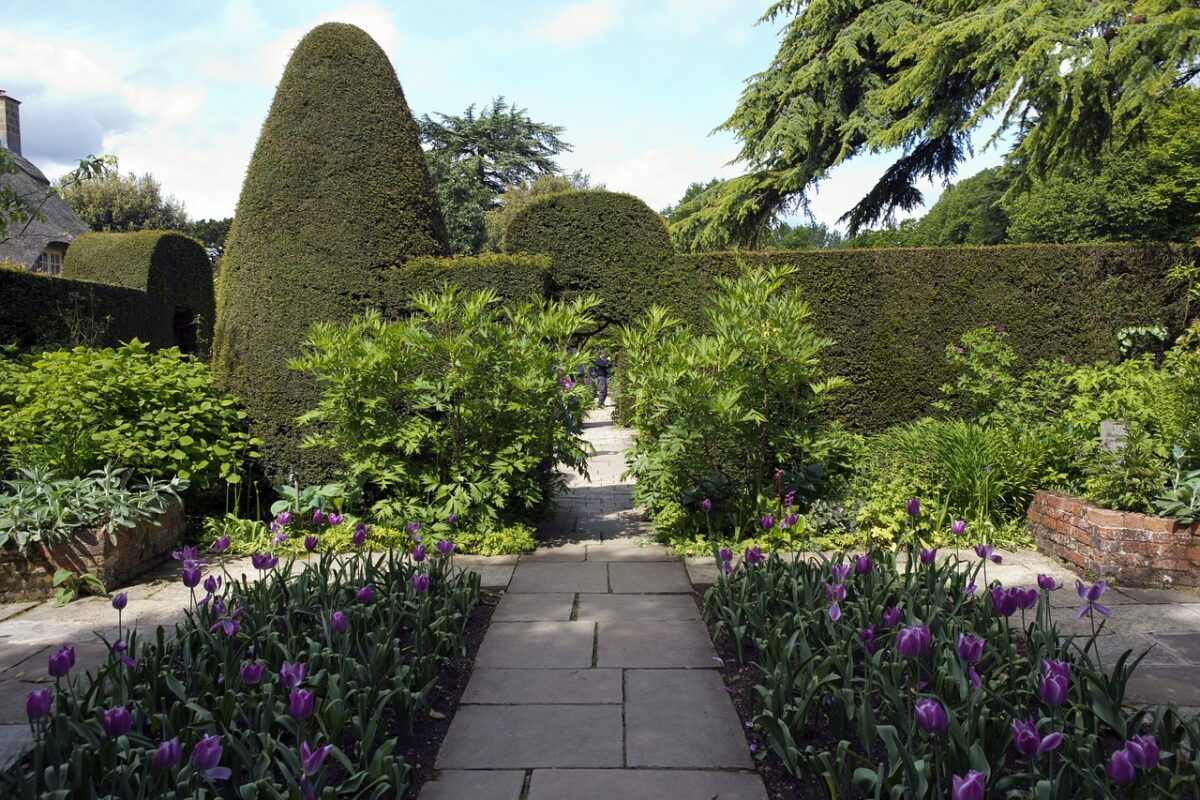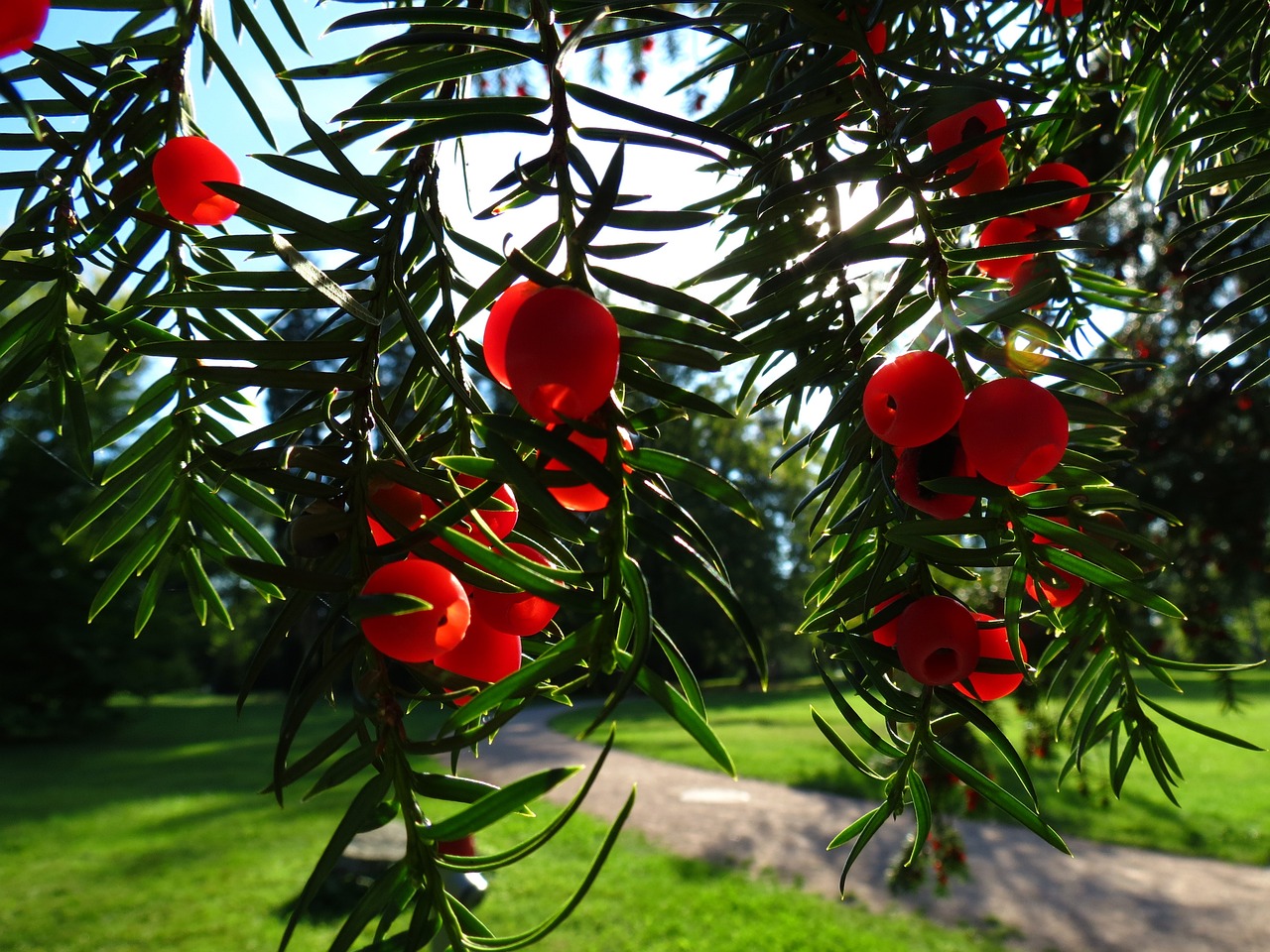IDENTIFICATION
Scientific name:
Taxus baccata
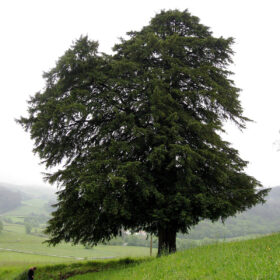
Italian common name:
Yew, tree of death.
Family:
Taxaceae
Origin:
Southwestern Asia, Northern Africa, Iran.
Environment:
Precisely from the temperate mountain belt, characterized by snowy but not freezing winters and relatively warm and humid summers. Sciaphilous species that lives in shady woods. It does not form pure forests, but mixes with beech, holly and maples between 300 and 1600 m above sea level, remaining at the lower levels in the internal mountains of Europe and at the higher levels in the Mediterranean area. It likes snowy and rainy winters, but not prolonged frost, with possibly humid summers.
Evergreen or deciduous:
Evergreen
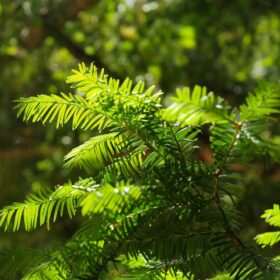
Toxicity:
All parts of the Taxus baccata are toxic with the exception of the aril (red fleshy part that surrounds the seed); their degree of toxicity varies depending on the season, the sex of the plant and its age. Even denaturing processes, such as drying and dehydration, do not decrease its toxic power. Any ingestion of seeds or parts of the plant requires immediate medical intervention and the subject must be kept under observation for at least six hours.
PLANT RECOGNITION
Height:
between 10 and 20 meters in height, with very slow growth, for this reason in nature it often appears in the form of a small tree or shrub, however in optimal conditions it can reach 15–20 meters in height
Width (extension):
4 – 8 meters
Habit:
The Taxus baccata is a second-largest tree with erect trunk, branching downwards. Growth is rapid at first, then over time, very slow. The foliage is irregular, with a pyramidal and expanded shape with larger horizontal branches and pendulous twigs at the ends.
Leaf:
Persistent, linear, needle-like, arranged in two rows on the sides of the branch. Flattened and slightly falcate linear blade, with a pointed but not pungent apex, dark green and shiny on the upper surface, with two lighter stripes at the base. The center grain is very prominent on both sides
Flower:
Dioecious species, which therefore bears male and female flowers on two different plants. Small, pale yellow males in clusters at the leaf axils and at the base of the branch, single females and at the branch apex, on separate plants in spring.
Flowering: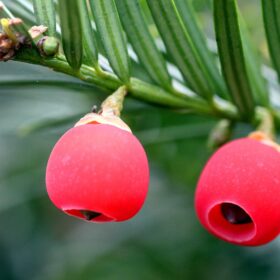
February – April
Fruit:
species of small solitary berries, called arils, consisting of a pulpy cup that is first green in color and then red when ripe which partially covers, leaving the tip exposed, a hard, blackish and poisonous seed.
Trunk:
erect, stocky, branchy from the base. With age it takes on a frail appearance in relation to the hair, which is relatively low and wide. It is purple brown in color, initially smooth but with age it rises, curling and dividing into plates. The young branches are green.
Property:
Although toxic, the taxol produced is used in medicine as an anti-tumor drug.
Parfume: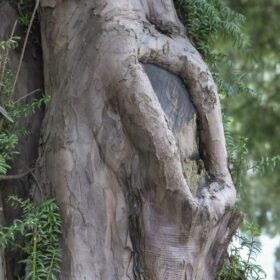
delicate
NEED
Maintenance:
low but in the hands of expert gardeners
Light Exposure:
from sunny to shaded, but prefers shady places.
Soil type:
Prefers calcareous soils and fertile, well-drained soil.
Soil acidity:
pH 5,0 – 8,0
Italian climatic area:
present throughout the Italian territory but is not common in the spontaneous state. The most notable populations are those of the Umbrian forest in the Gargano.
Need for water: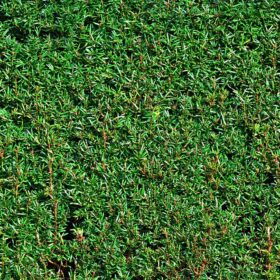
In the garden, rainwater may be enough: in the warmer months, however, it is a good idea to water it even though it tolerates drought well.
Propagation:
by seed, by cutting or by division of basal shoots.
Pruning:
Green light for topiary art and all useful interventions to stimulate branching. The Yew tolerates the heaviest pruning well, even when it comes to parts of older wood. The best time to intervene is spring, to stimulate the plant to new ramifications, precisely during the most active phase of growth.
Diseases:
Generally free from pathogens and diseases. It tolerates asphyxiated soils poorly which create root rot.
PARTICULARITY 
The name of the genus derives from the Greek ‘taxos’, yew, with the same meaning in Latin, and/or from its derivative ‘toxon’, arch. In fact, bows and arrows were already made from yew wood in ancient times due to its elasticity, tenacity and resistance. Baccata is a term of Latin origin which means berry, due to the typical red berries with which the tree is covered. The name tree of death derives from the toxicity of its elements which were also used for the manufacture of poisonous darts. Furthermore, the tree is associated on a symbolic level with cemeteries, as it is used in their ornamental trees.
Annotations
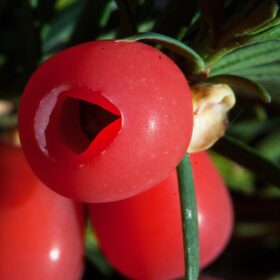
Belonging to the order of conifers and is the only one of these that does not have resin channels and therefore does not produce resin. Today it is mainly used for ornamental purposes, as it lends itself to beautifying parks and gardens, to decorating flowerbeds and entrances due to the various and curious shapes that its foliage can take. Thanks to its versatility, Taxus Baccata is also perfect for the creation of plant sculptures (topiary art) such as spheres, pyramids and squares.
The pulp is appreciated by birds who, by feeding on it, ensure the propagation of the seed. Birds are therefore not sensitive to that poison, while mammals are and would be seriously intoxicated by eating them. Yew wood is very valuable and today still sought after for cabinet making and lathe woodworking. It is a very hard and heavy wood, with a fine and homogeneous grain, tenacious and at the same time very elastic.
This plant lives a very long time. Although the rings cannot be counted because the duramen is destroyed, leaving the center hollow, fossil specimens of approximately 1500-2000 years old have been found.
In the kitchen:
No use
THE MONDO DEL GIARDINO ADVICE
When we say that the plant is resistant to even severe pruning, we don’t mean that you have to go all out with the cuts! However, yew pruning must be done by highly specialized personnel who above all love plants and always try to intervene as little as possible.
Now on horseback! Work awaits us! Our new wonderful outdoor space is about to be born!
GOOD WORK and…if you have any questions, write to info@ilmondodelgiardino.com
Image sources: thanks to Pixabay and many thanks to Alexa for the photo for social media and Ron Porter for the cover photo. Then in order of insertion wikiquote.org, Hans, Michael Reichelt, Brigitte Werner, 👀 Mabel Amber, who will one day, unalberoalgiorno.blog, Stefan Schweihofer and Ernst Eggmann for the closing photo.


